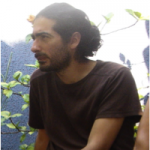Link to Pubmed [PMID] – 17469173
Hum Brain Mapp 2007 Jun; 28(6): 502-18
The search for genes of complex traits is aided by the availability of multiple quantitative phenotypes collected in geographically isolated populations. Here we provide rationale for a large-scale study of gene-environment interactions influencing brain and behavior and cardiovascular and metabolic health in adolescence, namely the Saguenay Youth Study (SYS). The SYS is a retrospective study of long-term consequences of prenatal exposure to maternal cigarette smoking (PEMCS) in which multiple quantitative phenotypes are acquired over five sessions (telephone interview, home, hospital, laboratory, and school). To facilitate the search for genes that modify an individual’s response to an in utero environment (i.e. PEMCS), the study is family-based (adolescent sibships) and is carried out in a relatively geographically isolated population of the Saguenay Lac-Saint-Jean (SLSJ) region in Quebec, Canada. DNA is acquired in both biological parents and in adolescent siblings. A genome-wide scan will be carried out with sib-pair linkage analyses, and fine mapping of identified loci will be done with family-based association analyses. Adolescent sibships (12-18 years of age; two or more siblings per family) are recruited in high schools throughout the SLSJ region; only children of French-Canadian origin are included. Based on a telephone interview, potential participants are classified as exposed or nonexposed prenatally to maternal cigarette smoking; the two groups are matched for the level of maternal education and the attended school. A total of 500 adolescent participants in each group will be recruited and phenotyped. The following types of datasets are collected in all adolescent participants: (1) magnetic resonance images of brain, abdominal fat, and kidneys, (2) standardized and computer-based neuropsychological tests, (3) hospital-based cardiovascular, body-composition and metabolic assessments, and (4) questionnaire-derived measures (e.g. life habits such as eating and physical activity; drug, alcohol use and delinquency; psychiatric symptoms; personality; home and school environment; academic and vocational attitudes). Parents complete a medical questionnaire, home-environment questionnaire, a handedness questionnaire, and a questionnaire about their current alcohol and drug use, depression, anxiety, and current and past antisocial behavior. To date, we have fully phenotyped a total of 408 adolescent participants. Here we provide the description of the SYS and, using the initial sample, we present information on ascertainment, demographics of the exposed and nonexposed adolescents and their parents, and the initial MRI-based assessment of familiality in the brain size and the volumes of grey and white matter.

